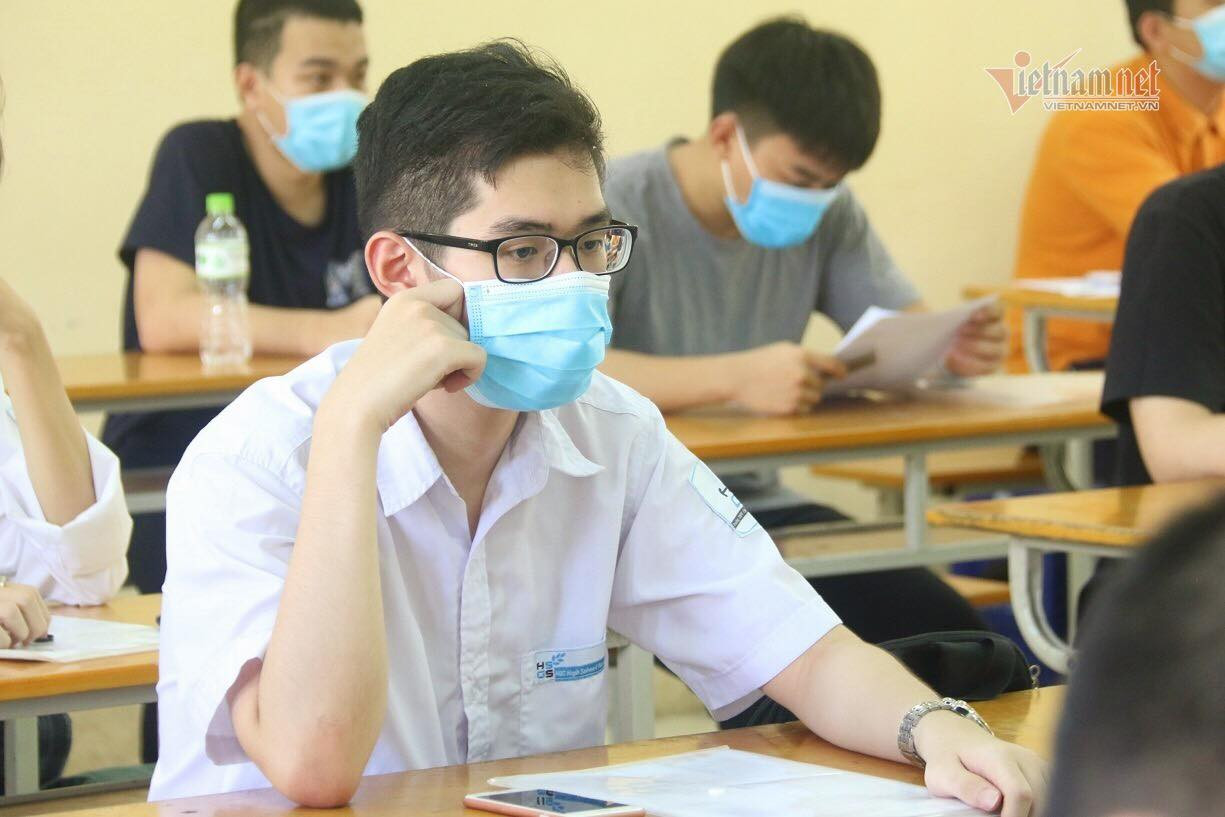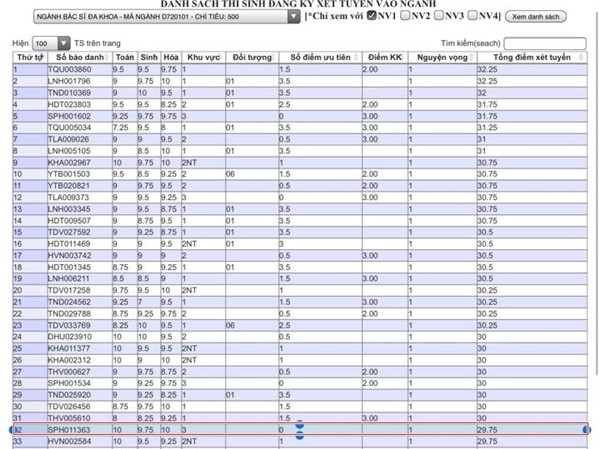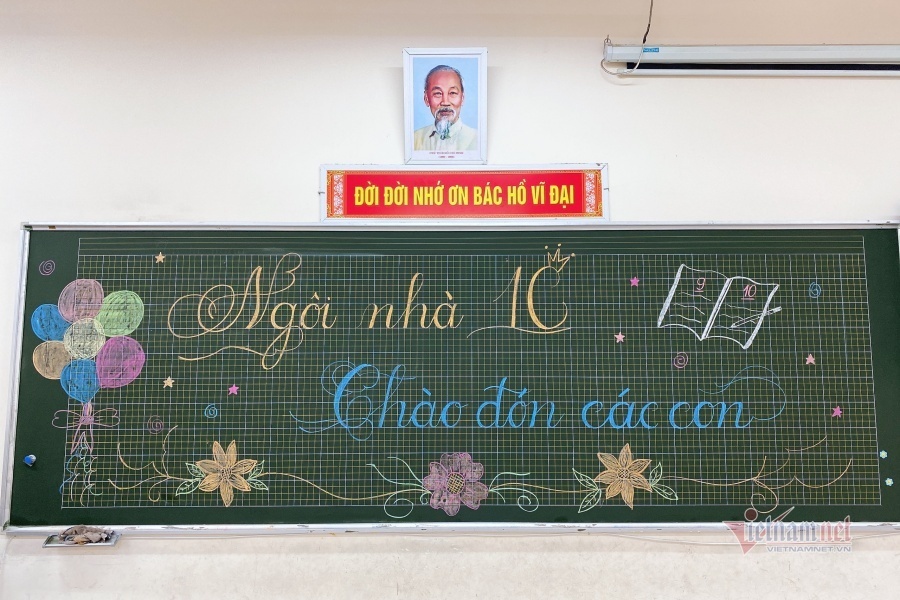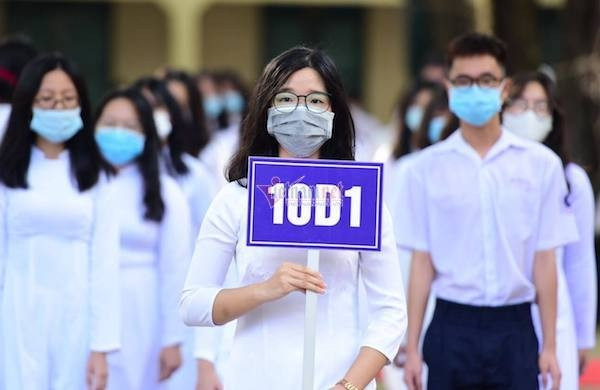Why has the Ministry of Education and Training changed 3 times?
Many times reduce regional priority points
In the period before 1988, the Ministry of Education and Training stipulated the appropriate admission scores for each region and each locality after the test results were available in the context of the undeveloped economic, cultural and social situation. evenly among regions, especially mountainous and border provinces in the North. The difference between the next two areas is 1 point.
Going to the period from 1989-1998, priority areas were divided into region 1, region 2 and region 3.
The division of enrollment areas is based on the proposal of the localities and the resolutions of the People’s Councils of the provinces and cities. The difference between the next two areas is 1 point.

In the period from 1999-2017, the Admission Regulation stipulates that there are 4 priority areas: area 1, area 2-NT, area 2 and area 3.
In which, from 1999-2003, the difference between the next two regions was 1 point.
From 2004-2017, the difference between the next two regions decreased to 0.5 points.
There was a time, from 2012-2017, candidates in the Northwest, Central Highlands, and Southwest regions were considered for admission scores 1 point lower than the standard score.
The difference in priority points is based on the time that candidates study and graduate from high school, on the principle of studying in an area longer, they will enjoy the difference in points in that area.
By 2018, after nearly 15 years of maintaining the regional priority policy, the Ministry of Education and Training decided to reduce the priority score by 50% for the second time.
Specifically, the difference between the next two regions is reduced from 0.5 points according to the regulations of previous years to only 0.25 points.
Thus, the candidate in area 1, who has the highest regional priority score, can only enjoy a maximum of 0.75 points.
The Ministry of Education and Training also decided to remove regulations on specific priority policies for students in the Northwest, Central Highlands and Southwest regions.
Startling numbers
The reason why the Ministry of Education and Training once again came to a decision to reduce the priority points of the region in 2018 was because a year earlier, in the 2017 enrollment period, the phenomenon of candidates receiving priority points overwhelmingly in the winning list. The recruitment of the hottest universities such as Medicine and Pharmacy, Polytechnic, and Foreign Trade has sparked a heated debate.
The story of 2 candidates in Region 3 (city) with test scores of 29.25 and 29.35 but still failed the 2 largest medical schools in the country because they lost in the secondary criteria and did not receive priority points. Those who do recruitment work must sit back and reflect on this issue.
Statistics from the Ministry of Education and Training show that 82-83% of candidates enjoy regional priority regimes. In some fields and schools such as police, army, medicine, etc., the results of the candidates are completely different from the scores that have not been prioritized.
The university that always has the top score in the whole country, Hanoi Medical University, released a “startling” statistic: In 2016, there were only 99 candidates who passed without any plus points (priority, promotion) incentives), accounting for about 8%.
In 2017, the number of candidates who entered Hanoi Medical University without priority points (subject and area) was 105 candidates, accounting for 8.9%.
If excluding the 6 candidates with incentive points (not a priority), the total number of candidates who passed the Medical University with test scores was only 99 candidates, accounting for 8.4%.
The number of candidates from Region 3 who entered Hanoi Medical University in 2017 was 110 students. In which, 5 children have priority points.
If only the General Medicine major (Hanoi campus), only 24 candidates from Region 3 (not receiving regional priority points) passed this branch of Hanoi Medicine that year (accounting for 5%). The remaining 452 candidates belong to other regions (with priority points added).
The 21 candidates who did not receive both regional and object priority points accounted for only 4.4% of the total of 476 candidates who were admitted to General Medicine in 2017.
If calculated by test scores, out of a total of 476 candidates who passed the General Medicine major, only 84 candidates had a total score of 3 subjects with a standard score of 29.25 or higher.
Thus, the remaining 392 candidates were admitted thanks to priority and incentive points, accounting for 82.4%.
In the same year 2017, out of 404 candidates who passed in the General Medicine major – University of Medicine and Pharmacy, Ho Chi Minh City, only 26 candidates did not receive any priority points, they were from Region 3.
There are 6 candidates with 3 exams all achieving 10 points. But thanks to the addition of priority points, there are 115 candidates with a total score of over 30.
The candidate with the highest admission score is 32 – in addition to 3 points of 10, she gets 2 priority points.
Only 84 candidates had a total score of 3 subjects of 29.25 or higher. That means if there is no priority score, 320 candidates (79.2% rate) will not be admitted to the university’s General Medicine major.
Out of 404 candidates, there were 370 candidates who received regional priority points, 43 candidates with added target priority, 39 candidates with both regional priority and object priority.
There are 22 candidates with the highest priority of 3.5 points.
In the 2015 enrollment period, a candidate who only calculates test scores will be the valedictorian of Hanoi Medical University with a score of 10-10-9.75, a total score of 29.75 but continuously outside the top 30 of the major. selection, less than many candidates are added points (group of candidates with scores up to 30.5-31-32.5 on a scale of 30)….

And recently, when the university benchmarks in 2021 exploded, it is not difficult to see that some subjects have benchmarks of over 30 points, some hot subjects such as Computer Science, Artificial Intelligence… of the university. Hanoi University of Science and Technology has only a few students from Hanoi.
Priority points reduced, but there should be exceptions
Looking back on the process of implementing the regional priority policy so far, with the Ministry of Education and Training’s expectation that in the 2022 enrollment period, priority points will not be added to candidates who retake the exam, Assoc.Prof.Dr. Tran Trung Kien, Head The Admissions Department, Hanoi University of Science and Technology suggested that the ministry should reconsider a number of exceptions.
According to Mr. Kien, there are candidates who cannot participate in university entrance examination because of difficult family conditions and circumstances during the graduation year or because of some force majeure reasons. are more stable and want to retake the exam, should be applied the regional priority plus point.
Mr. Kien said that these are the subjects that need to be encouraged and encouraged. In particular, if these candidates enroll in “hot” subjects, sometimes, only 0.25 – 0.75 points will also create a pass-fail boundary. If the points are not added, this will make them disadvantaged.
However, for candidates who have participated in the high school graduation exam in previous years, who have used the right to add priority points, according to Mr. Kien, they can skip adding points for these subjects. The reason is because, the priority of the region is inherently a priority for those who have difficulty in accessing and enjoying education.
Freelance candidates have many advantages over those taking the exam for the first time, not to mention some of them, although they live in priority areas, have moved to places with better conditions to prepare for the exam. Since then, the difficulty has also decreased.
Sharing the same opinion, Assoc. Prof. Dr. Nguyen Thanh Chuong, Vice President of the University of Transport, said that the policy of the Ministry of Education and Training wishes to create equality in learning conditions among groups of candidates. Freelance candidates have the advantage of time and exam experience over those who take the exam for the first time. Therefore, it is reasonable to remove priority points for this object.
However, according to Mr. Chuong, this regulation should also consider special cases, for example candidates last year due to illness or disease could not take the exam. In the first place, priority policies should still be applied to avoid disadvantage for children. The removal of area priority points can be applied to those who take the exam for the second time or more.
Meanwhile, Dr. Le Viet Khuyen, Vice President of the Association of Vietnam Universities and Colleges, said that the rules for adding priority points should be kept for all subjects, even if they are candidates for graduation exams. this year or in previous years.
“The story of adding priority points to the region is meant to encourage and support candidates in rural areas with more difficult learning conditions than urban areas. Priority points should only be dropped when equality and fairness between regions and regions has been ensured. But in Vietnam, the enjoyment of social welfare is still uneven, so such priorities still need to be given.
For free candidates, even if they retake the exam, their circumstances have not changed, they still study in priority areas and have to suffer many disadvantages, why are there such distinctions and exclusions?
Not to mention, there are candidates who have to work hard to make a living, because they can’t afford to go to school, so they have to accept it at home. After a while, their life improved, they had the opportunity to continue going to school. For these subjects, they should still be prioritized and encouraged,” said Dr. Le Viet Khuyen.
Phuong Chi – Thuy Nga
at Blogtuan.info – Source: vietnamnet.vn – Read the original article here



